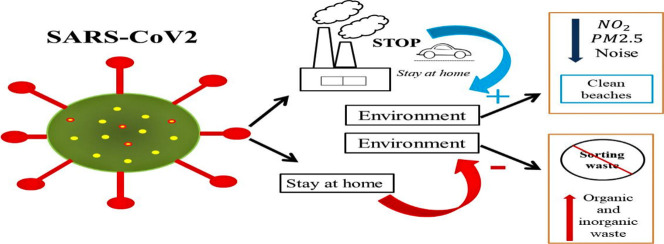- Record: found
- Abstract: found
- Article: not found
Indirect effects of COVID-19 on the environment

Abstract
This research aims to show the positive and negative indirect effects of COVID-19 on the environment, particularly in the most affected countries such as China, USA, Italy, and Spain. Our research shows that there is a significant association between contingency measures and improvement in air quality, clean beaches and environmental noise reduction. On the other hand, there are also negative secondary aspects such as the reduction in recycling and the increase in waste, further endangering the contamination of physical spaces (water and land), in addition to air. Global economic activity is expected to return in the coming months in most countries (even if slowly), so decreasing GHG concentrations during a short period is not a sustainable way to clean up our environment.
Graphical abstract
Highlights
-
•
Positive and negative indirect effects of COVID-19 on the environment are presented.
-
•
Contingency policies are linked to improvements in air quality, clean beaches and less environmental noise.
-
•
Increased waste and the reduction of recycling are negative side effects of COVID-19.
-
•
Decreasing GHGs during a short period is not a sustainable way to clean up our environment.

